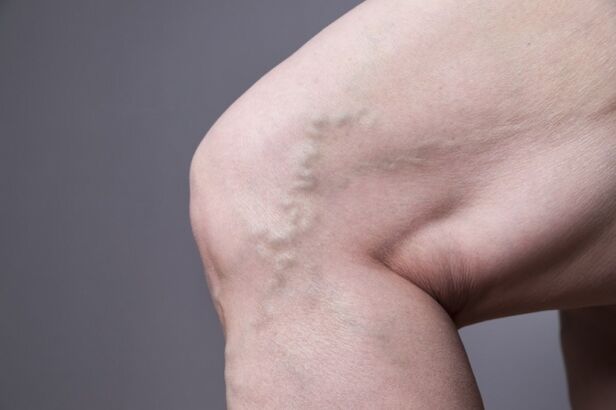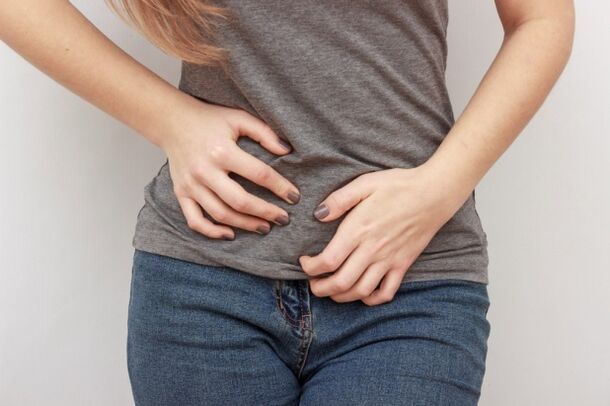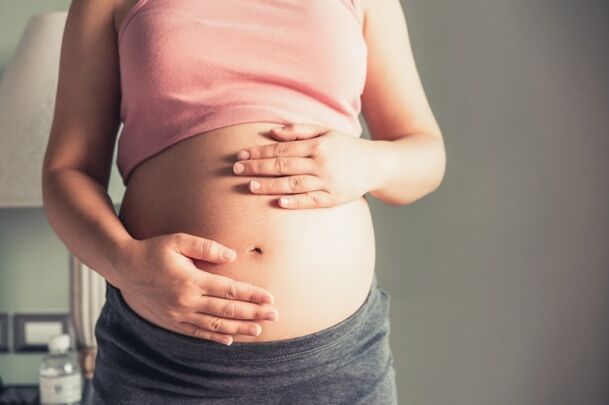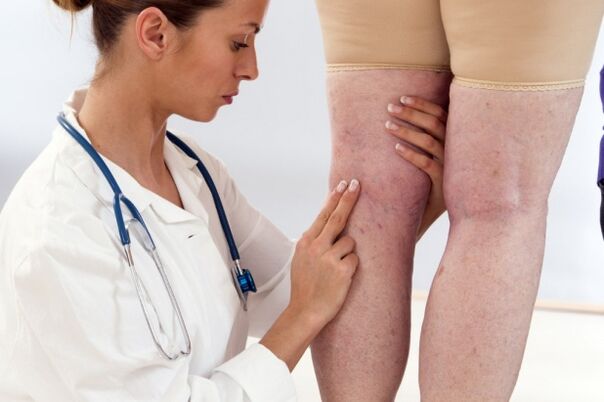Chronic venous insufficiency and varicose veins are generalized diseases: according to statistics, each third person faces in developed countries.The special risk group includes representatives of fair sex, to whom this pathology offers physical and psychological discomfort.In this article, we will consider why vascular diseases occur in women, what are their signs and symptoms, what to do for the treatment and prevention of this disease.
Varicose veins: Causes of varicose veins in women
According to statistical data, men are less likely to suffer from varicose veins than women whose vessel diseases occur 1.5 times more often.What caused the gender characteristic of this pathology?

- Characteristics of the hormonal background.During the monthly cycle, women's hormonal history is subject to fluctuations and, during pregnancy, delivery, lactation and menopause, these changes become even more significant.The proportion of female sex hormones (estrogen and progesterone) has a direct effect on the condition of vascular walls and blood viscosity.
- Hormone therapy.Reception of combined oral contraceptives of hormone therapy and assuming the hormonal background, thus causing a change in the proportion of estrogen and progesterone in the body.
- Wearing tight heels and pants.Unknown shoes, narrow underwear and jeans - all of which causes a violation of blood flow at the lower and pelvis extremities, leading to the development of varicose veins.
In addition, exclusively feminine, prerequisites for the development of pathology, varicose veins in women can cause the following factors:
- Genetically determined predisposition.According to statistics, a tendency to varicose veins is observed in 60% of cases if one parent suffers from this pathology.
- Significant excess of weight.Obesity is one of the factors in the occurrence of varicose veins, since the lower limbs experience increased pressure.
- Excessive load on the legs.If you are professionally involved in running, jumping or powerlifting, beneficial conditions are created for the development of problems with veins.
- Interruption of blood circulation caused by a fixed pose.If you spend most of your day sitting or standing, this is a serious prerequisite for the development of vein diseases.
- Unstable nutrition.A diet, bad fibers, vitamins and trace elements leads to disorders that affect the walls of blood vessels and blood composition.In addition, an unbalanced diet can cause constipation, which is also able to lead to changes in the veins - in particular to the varicose veins of the pelvis.
- Endocrine and Cardiovascular Systems Diseases.Endocrine disorders cause changes in the hormonal background, which in turn become prerequisites for the development of varicose veins.Cardiovascular pathologies (in particular hypertension) also cause the development of problems with the veins.

Varicose veins of the pelvic veins in women
Pathological expansion of the pelvis vessels is a common problem that faces 15-25% of women of reproductive age.This disease is often confused with infectious and inflammatory processes localized in the reproductive organs of the female genitourinary system.In connection with the diagnosis made incorrectly, inappropriate treatment is prescribed and the patient is not relieved.Consequently, the problem of proper diagnosis and therapy of pelvis varicose veins is an urgent problem of modern phlegology and gynecology.
The blood supply for the pelvic organs occurs due to uterine and ovaries veins, as well as the venous-vaginal plexus, vaginal bubble, formidable, rectum plexus, etc.The cause of pelvic varicose veins in women is to violate blood flow in these containers.It is usually caused by blood stagnation, which may be due to the following facilities:
- Sitting way of life;
- previously transferred gynecological diseases;
- Hormonal Fund violations (in particular - high estrogen level);
- a history of pregnancy and childbirth;
- Congenital and acquired violations of connective tissue (namely a disadvantage of collagen).
The opinion is an expert feature of this vein disease in women is the presence of chronic pelvic pain syndrome.It is represented by pain in the lower abdomen, radiating to the pubic area, sacrum and groin.
The peak of pain usually falls in the second half of the menstrual cycle, complemented by severe pre -menstrual syndrome and dysmenorrhea.Psychosomatic disorders may join the mentioned symptoms.

As noted above, the diagnosis of pathology is difficult because the symptoms of this disease of veins in women can be misinterpreted as signs of purely gynecological problems.Therefore, to make the correct diagnosis, transvaginal ultrasound, dopplaography, phlegography will be required, in some cases, diagnostic laparoscopy.
For the treatment of varicose veins of a small pelvis, a conservative and operational approach is used.
In the first case, the goal of therapy is to increase the tone of the venous walls, normalization of the nature of blood flow and blood viscosity.To solve these problems, patients are prescribed venotonia, performing hirudotherapy, ultrasound and magnetotherapy sessions, as well as exercise therapy exercises.If conservative therapy for this disease of the pelvis is ineffective, surgical intervention is performed - sclerosis or embolization with veins in pregnant women.
Problems with Vienna in pregnant women
Varicose veins are the problem of most pregnant women.It is due to changes that occur in the expectant mother's body during pregnancy.During this period, there is a complete restructuring of the hormonal fund, which is directly related to the state of blood vessels.For example, estrogens' growth leads to changes in the structure of the muscle layer of the venous walls and the expansion of blood vessels.

In addition to the hormonal changes that accompany the pregnancy and birth period of the baby, pregnancy and childbirth are able to cause the development of vein diseases in pregnant women and for other reasons.First of all, it is an increase in body weight and the concomitant growth of load in the lower limbs, as well as the excessive tension that women in labor experiences during contractions.
During pregnancy, an increase in the total volume of circulating blood is observed, which occurs due to the growth of plasma and red blood cells.
Venus diseases in women: symptoms and signs
Depending on the stage of development, the varicose veins in the legs manifest themselves in different ways:
- The early stage of the pathological process is easy not to understand, since its manifestations are usually minimal.Small vascular stars appear on the legs, at night there is a slight sense of discomfort at the end of the day, there may be a slight swelling.Even if the clinical image described does not cause much anxiety as soon as you have the named symptoms, it is recommended to consult a doctor.
- If the disease was not detected at the initial stage and treatment was not started on time, vein problems in women worsen.The venous network becomes more and more pronounced, characteristic nodules and cords are clearly visible under the skin, swelling and a feeling of fullness in the lower extremities cause serious discomfort.
- If the disease is not treated or treated ineffectively, it becomes advanced.The affected veins stand out strongly under the skin, there is constant swelling, occurring cramps at night, the skin of the leg region can change color and be covered with trophic ulcers.
Vein diseases in women: treatment
There are two main approaches to solving this problem: conservative and surgical.The first of them is usually used in the initial stages of the development of the pathology, while the second is justified to combat the later stages of the disease.

Conservative therapy includes taking medications, using topical products, attending physiotherapy sessions, using compression socks, adjusting physical activity, daily routine, food and beverage consumption regime.In addition, you can use additional products to combat varicose veins - for example, Normaven® Leg Cream.Its regular application to the lower ends helps eliminate swelling, tiredness, weight and leg discomfort, disappearance of night cramps and decreased severity of the vascular pattern.
Thanks to its natural composition, the cream can also be used during pregnancy.
Surgery aims at the total or partial removal of the varicose veins.Modern vascular surgery can offer the following types of operations:
- Combined Flebectomy.
- Laser coagulation.
- Radiofrequency coagulation.
- Sclerosis.
When it comes to the treatment of venous diseases in women aged 50 to 60 years and in older patients, surgical intervention is usually not performed as it is stressful for the body.























